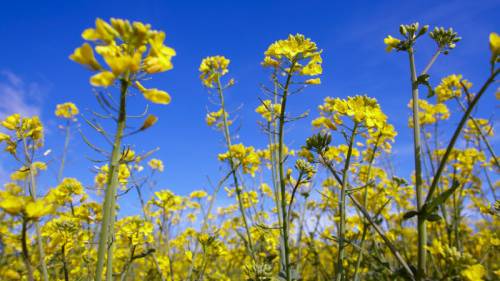U.S.: Tenuous Future for Dicamba, Input Costs Weigh on ’22 Seed Decisions
“The seed business was great in 2021. For the first time in a couple of years we didn’t have a whole bunch of prevent-plant acres,” Jim Hedges, WinField United Vice President of Seed Marketing, says. “The seed that we shipped actually got in ground with near-historic low returns.”
As U.S. growers and retailers prepare for the 2022 season, he points to challenging spots — tar spot wreaking havoc in northern Illinois into Wisconsin, resurging corn rootworm (CRW) in Iowa and Minnesota, and southern rust in the Southeast, writes Jackie Pucci at CropLife.
“We tried to keep (seed prices) as flat as possible, but there was some cost increase we absolutely had to cover. I think growers will be pleasantly surprised,” Hedges explains. “With that being said, and as a farmer myself, the challenges with nitrogen, phosphorus, and potassium are real and costs are definitely going to increase significantly. In-season management around nutrients will be more critical than ever.”
Total seed sales at ag retailers are projected to be just shy of $5 billion in 2021, up from $4.7 billion in 2020, according to preliminary results from the 2021 CropLife 100 survey.
The segment will lose market share, however, because the other three categories — crop protection products, fertilizer, and custom application — have grown faster. Seed was at 15% market share for all crop inputs/services in 2020; it will drop to 14% for 2021, survey results showed.
Overall, 57% and 50% of retailers say their traditional and biotech seed sales, respectively, were flat in 2021; only seed treatment gained ground, with 56% of survey respondents saying this segment grew between 1% and more than 5% for the year.
Intensified corn rootworm pressure and sharply higher input costs are weighing on people’s minds as they make their seed decisions for 2022, Bil Schrader, Agronomist and Seed Division Manager at Asmus Farm Supply in Rake, IA, tells CropLife®.
Corn rootworm traits are expected to figure more prominently in 2022. Growers in the Midwest saw heavier CRW pressure this year, a likely result of large beetle populations in past seasons, good overwintering of CRW eggs and favorable spring conditions for larval survival, according to Syngenta. CRW has a highly adaptive life cycle, and populations can build year after year in fields when left uncontrolled, costing growers around $1 billion in lost yield and control measures each year.
In the Asmus Farm Supply geography of north-central Iowa and south-central Minnesota, the trait is often simply not enough, Schrader says. Near-record fertilizer costs, shortages of Roundup and Liberty herbicides, and the need to layer on insecticide treatments will push perpetual corn-on-corn growers to switch to soybean acres in greater numbers next year.
Future of Dicamba
The fractured soybean market has been, of course, a hot-button issue in the industry — which platform to choose has never been more contentious.
“I think the future of dicamba is tenuous at best,” Schrader predicts. “A lot of tissue samples were sent to South Dakota and a lot of them came back positive for dicamba. With the push from Corteva through their seed brands — Pioneer, Brevant, and Stine — I wonder what the future is of Xtend beans. I think that with those brands and the history of dicamba, over the next couple of years there will be a tendency for more Enlist beans to get planted.”





